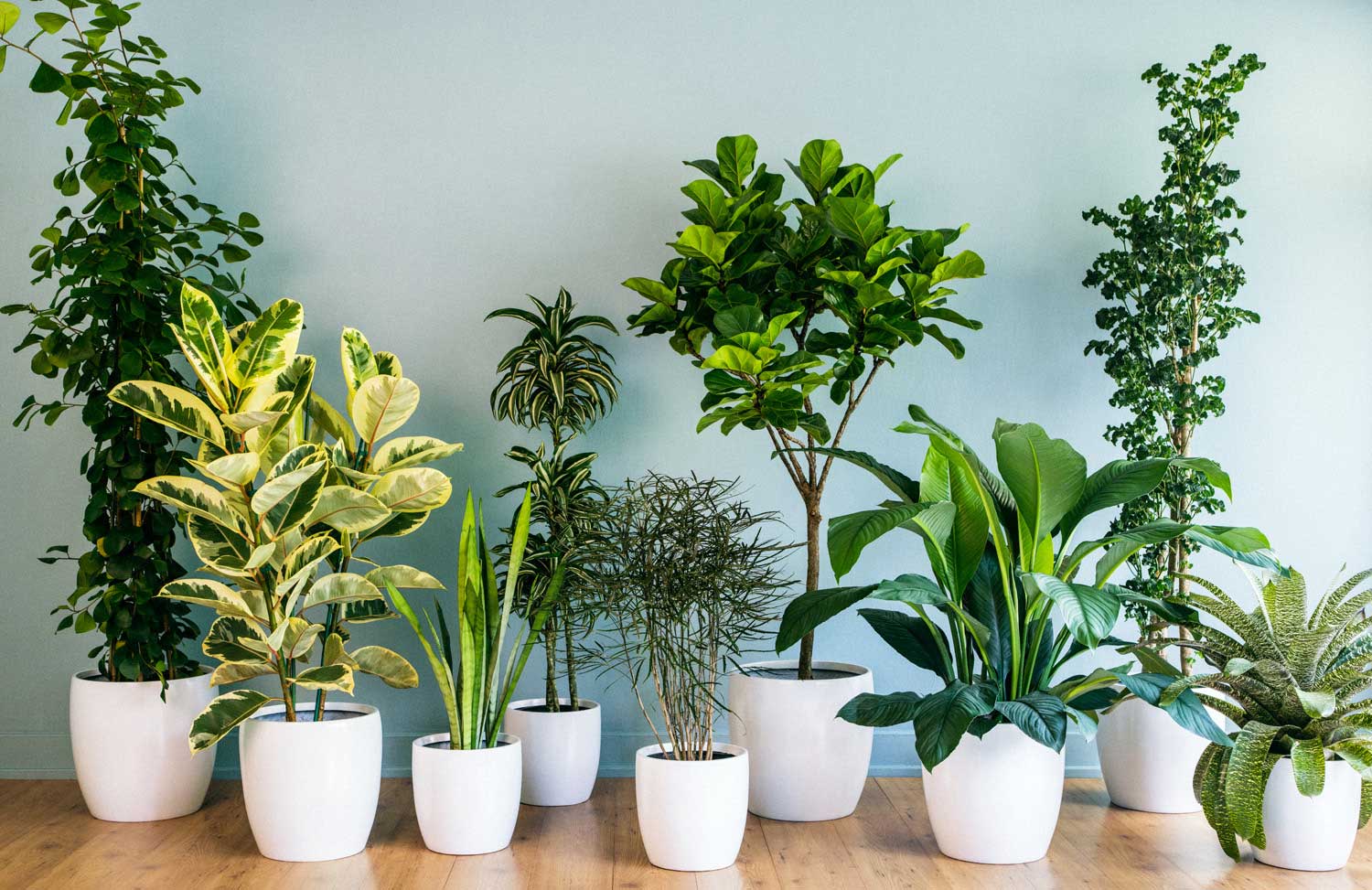Do you want to liven up your home or office? Instead of buying a new HD TV, why not just get an indoor plant? Indoor plants provide a cheap and practical way of styling up your living space. These plants can also do a lot of good to your healthy aside from beautifying your home or office.
According to research by NASA, houseplants can eliminate nearly 90% of toxins in the air in just 24 hours. Moreover, other studies have shown that indoor plants can improve a person’s concentration and productivity by 15%. Indoor plants have also shown to be effective in reducing stress levels and boosting a person’s mood.
Indoor plants, in short, can make your home and office more inviting. It can regulate humidity in your living space, regulate humidity, and hike levels of positivity. It is safe to safe that putting indoor plants can enhance your life.
These 12 best indoor plants are easy to care for with low-maintenance requirements for water and sunlight.
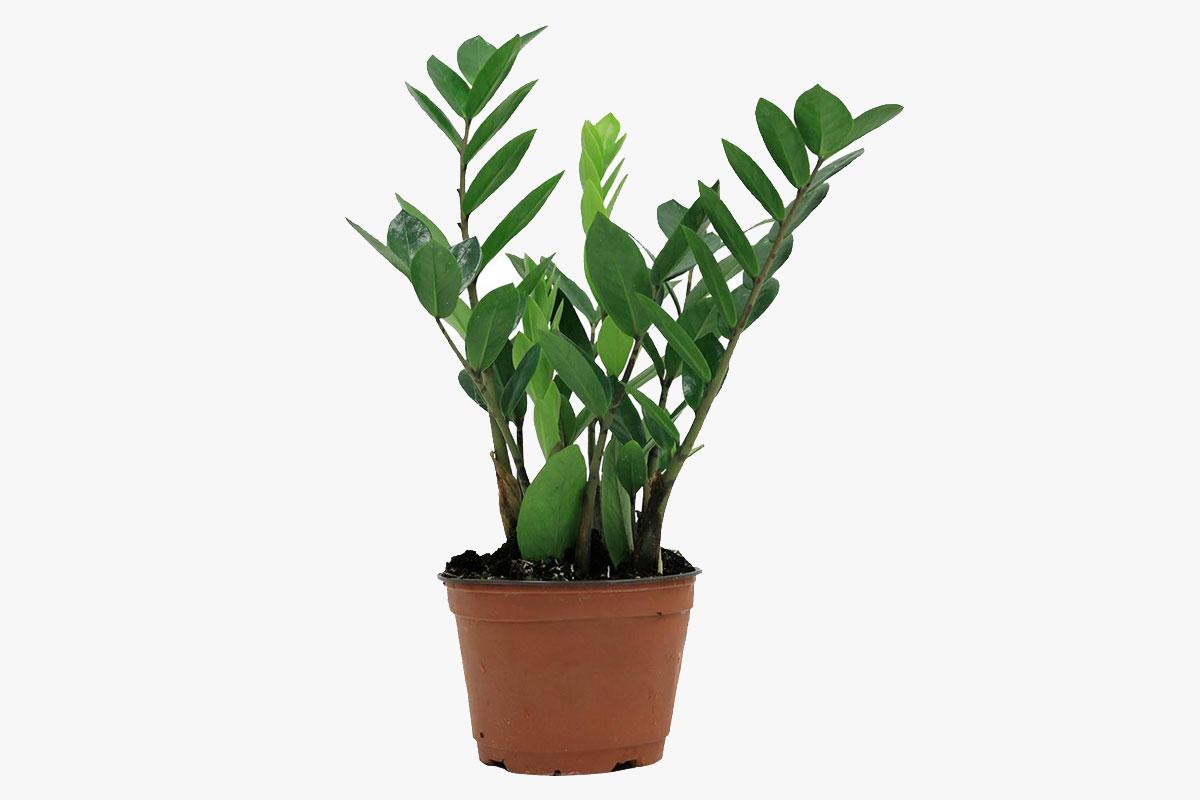 ZZ Plant
ZZ Plant
The ZZ plant, or Zamioculcas zamiifolia, has been around for ages. It is believed to have originated from Africa. It was only in 1996 when the plant was propagated in Dutch nurseries and later on, around the world.
The ZZ plant is so easy to maintain that it can almost thrive without you touching it. It can grow well in low-light areas. It won’t demand regular watering. In fact, it can thrive even if you water it every two weeks.
The plant features wide and attractive green leaves. It can enhance the look and feel of homes and offices with its waxy and smooth leaves reflecting sunlight. It also won’t outgrow its container quickly, as it grows rather slowly to a maximum height of 3 feet.
Moreover, it is a plant with other uses, such as removing toxins in the air, including benzene, toluene, and xylene. It thus works as an air purifier.
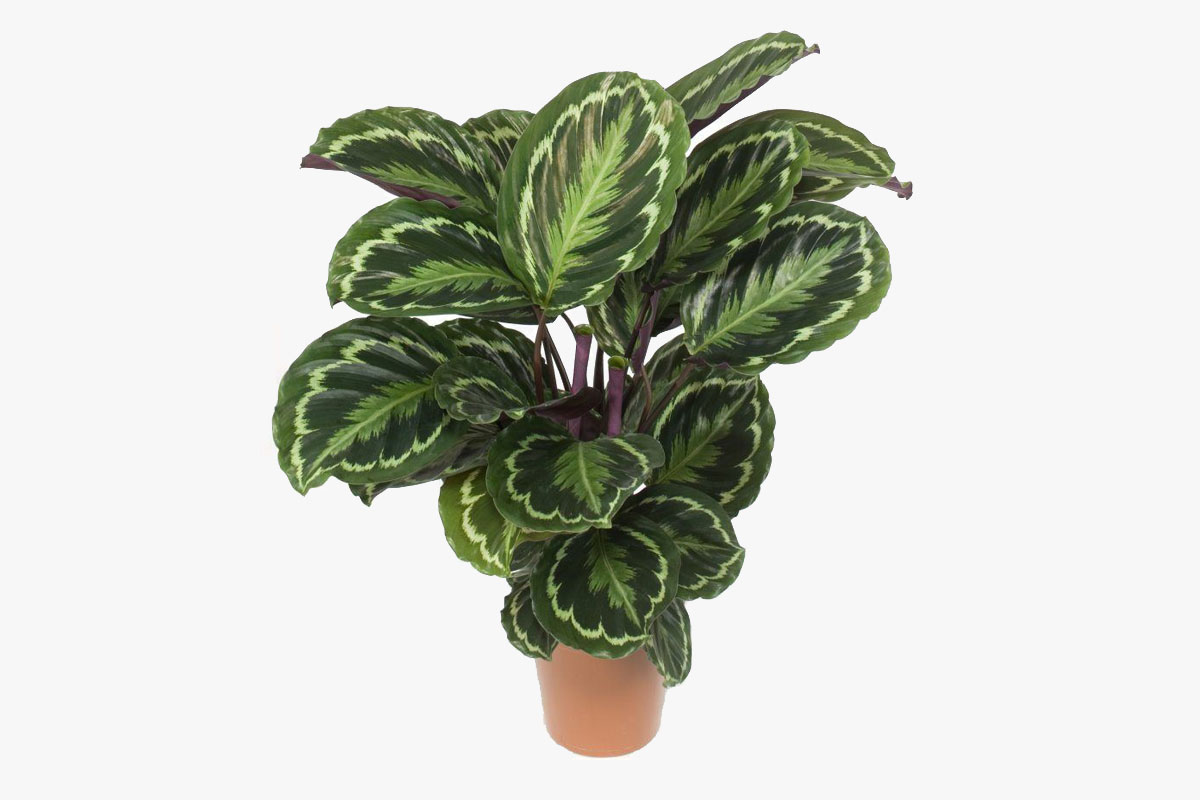 Calathea Plant
Calathea Plant
One of the most popular indoor plants, the Calathea, is widely used for indoor office decoration. It prefers indirect lighting and does not demand regular watering. Its bright green leaves can also liven up indoor areas.
The Calathea is part of a family of plants called Marantaceae, which is widely grown in tropical places like Africa. This plant thrives in jungles. The Marantaceae family is known for its wide and green leaves. As a low light plant, those broad leaves can absorb and utilize as much light as it can get.
It is not surprising that the Calathea plant is popular as an indoor plant. After all, it is easy to care for. You can plant it in various planters and locations. It won’t demand direct sunlight to grow. In fact, it does not need direct sunlight, as this can burn its leaves and lead it to lose its bright colors.
The plant does not require regular watering either. However, you’ll have to use distilled water on it. There is also no need for fertilizers or pruning.
 Snake Plant
Snake Plant
The Snake plant can grow just about anywhere, including in your home or office. Its ability to thrive in any conditions and sans much care has made it one of the more popular indoor plants ever.
It is characterized by its stiff and upright leaves that come in various colors such as gold, silver, and gray. The leaves are also sword-like in appearance. The plant can grow up to 12 feet high.
Like the ZZ plant, a Snake plant is nearly indestructible. It would remain thriving even if you neglect it for weeks. You don’t have to water it too much, particularly during the winter season. You can also put the plant in a place that gets indirect sunlight. It is not recommended to put it in direct sunlight because it will burn quickly.
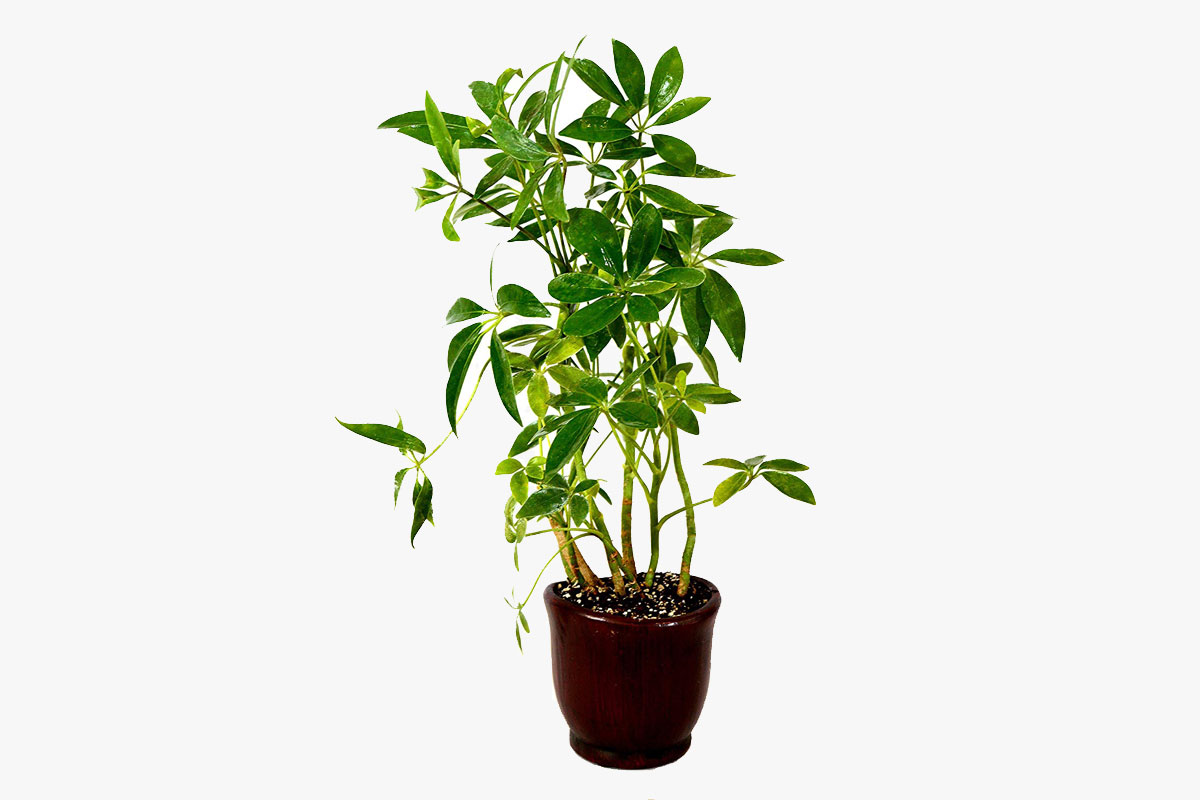 Umbrella Plant
Umbrella Plant
This is a fast-growing shrub that can happily thrive in various habitats. Originating from Taiwan, the Umbrella plant can grow to more than 10 meters high when kept outside. But its growth is clipped when it is kept indoors.
The Umbrella plant is quite hardy in that it will continue growing even if you neglect it. The plant requires a modest amount of water. You can also water it 2-3 times a month. Gardeners even note that overwatering is a more common dilemma than lack of watering with the Umbrella plant, so you should only water it when the upper layer of soil becomes dry.
As for its light requirements, the Umbrella plant can thrive in both brightly and darkly lit homes although it grows best when kept in bright areas and away from direct sunlight. Too much sunlight can damage its leaves.
If you are the type of individual who goes on vacation every now and then, the Umbrella plant is the indoor plant you should get because of its distinct robustness.
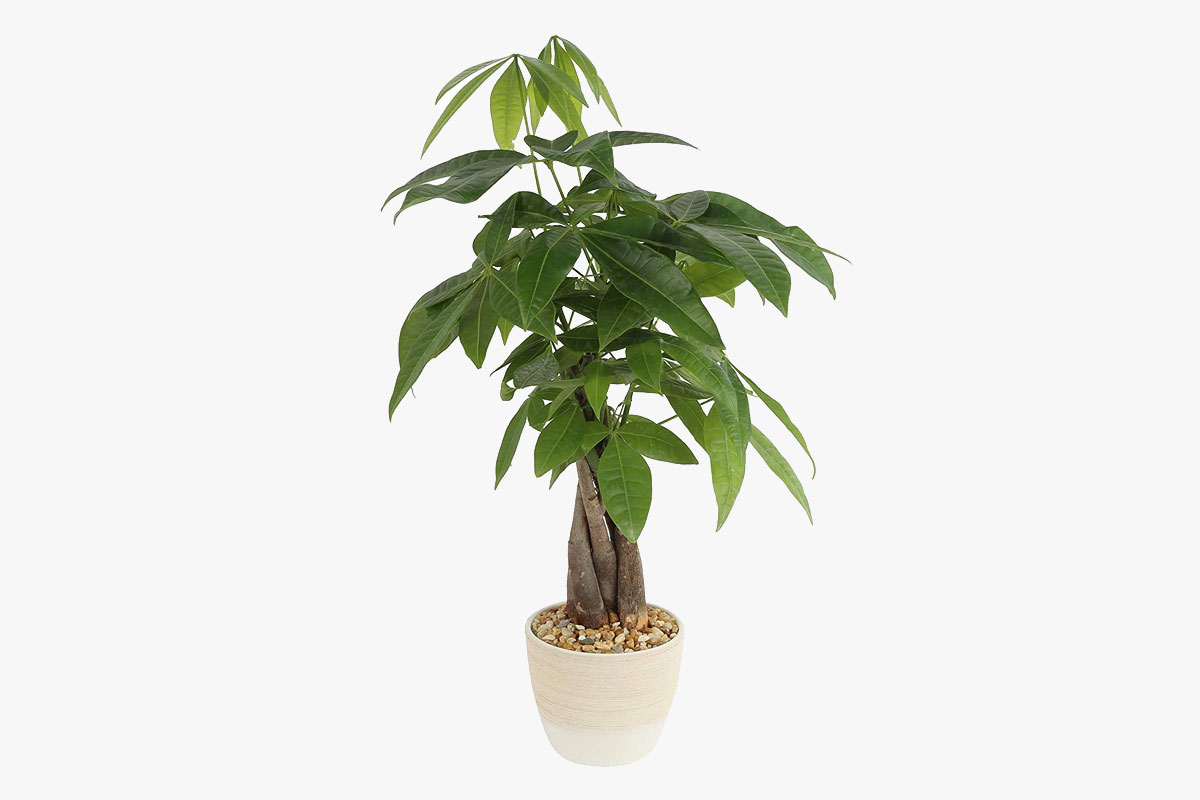 Money Tree
Money Tree
The Money Tree, or Pachira aquatica, is a staple in plant shops worldwide. It is highly resilient and easy to grow, two qualities that you would want from an indoor plant. It also has the unique ability to rebound and grow if neglected.
As the name suggests, this plant is considered to provide good fortune by the Chinese. Here’s a bit of trivia: Money Tree is highly coveted by people who practice feng shui, as it typically has five leaves on a stem. Five is considered a lucky number in feng shui. Thus, the money tree is a popular office or business gift for men or women.
This plant, known for its braided trunk, originated from the swamps in Central and South Americas. A Money Tree can grow up to 60 feet outdoors. But those sold for indoor use or care usually come in 4-inch wide pots.
Money Trees thrive in areas that receive bright and indirect light. Avoid placing one in direct sunlight as it can damage the leaves. The plant also prefers to be placed in an area with moderate to high humidity, such as in the bathroom.
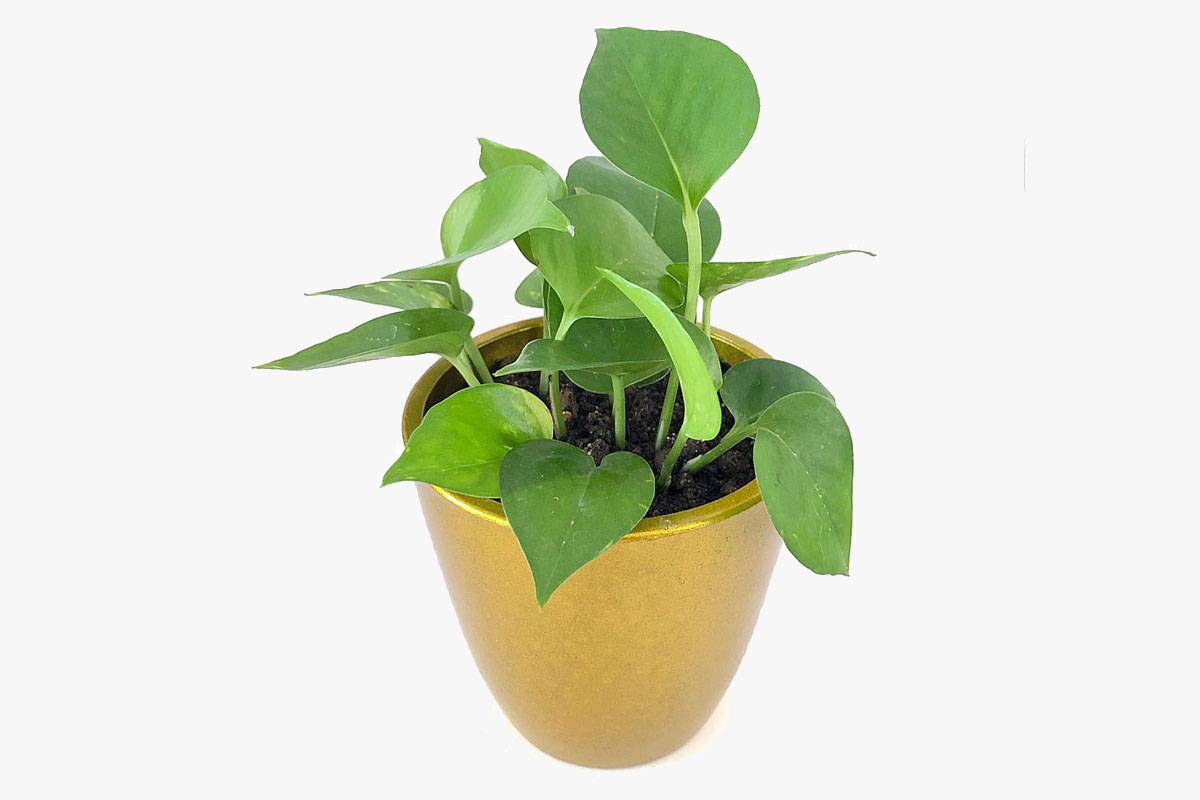 Pothos Jade
Pothos Jade
The Pothos Jade is a hardy, low-maintenance plant best known for its climbing vines. It comes in various leaf patterns and colors. Easy to care for and highly tolerant of low lighting, the Pothos Jade can be a good addition to your home or office space.
Known as Epipremum aurem in the botanic world and colloquially referred to as Devil Ivys, the Pothos Jade can do well in low to medium-lighted areas. Lighting tends to affect the colors of the plant, though. The lower the light that the plant is exposed to, the less variegation and color variations that the plant gets.
The Pothos Jade requires water every 7 to 10 days, so it appeals to busy homeowners. Overwatering is a no-no because it can easily rot. Another thing to love about this plant is its versatility. You can place it on a table, shelf, or cabinet or hang it so that its long stems can enhance the look of your living space.
 Peace Lily
Peace Lily
One of the most common houseplants in the world, the Peace Lily is beautiful and easy to grow. This is a tropical and evergreen plant that grows on the forest floors in its natural habitat. There, it receives consistent moisture and limited sunlight. Those are also key points to consider if you want to grow a Peace Lily at home or in the office.
Peace Lilies for household use tend to grow up to 16 inches in height. Watering them should not be much of a chore for a busy individual like you. Peace Lilies are also more likely to die because of overwatering. You won’t have to keep a schedule in watering Peace Lilies. You’ll know that the plant needs water if the upper layer of the soil is dry.
Peace Lilies can enhance the look and feel of your home or office with its pure white flowers and dark green leaves. Like the Money Tree, Peace Lilies are often given as housewarming gifts. Perhaps the only downside to owning and caring for one of these plants is that you will have to be concerned with its size, as the plant keeps growing. If a Peace Lily gets too big, then you may have to repot or even divide it.
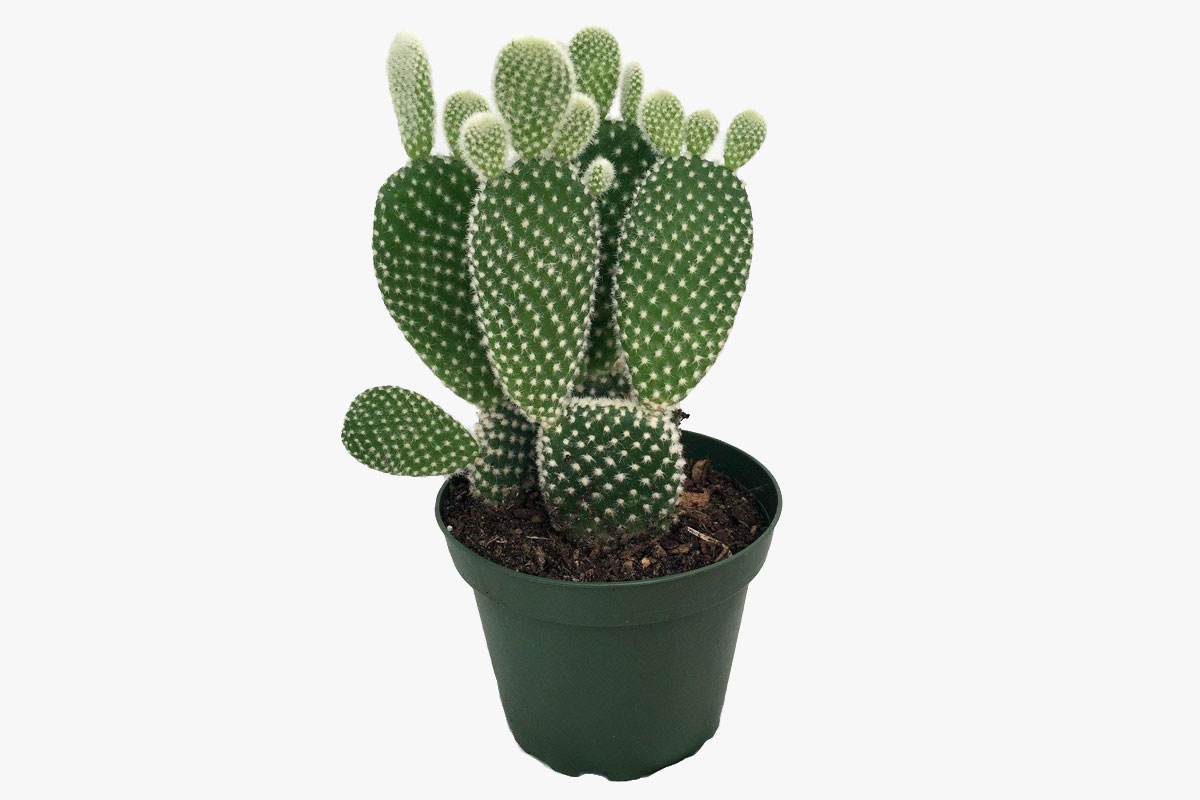 Bunny Ear Cactus
Bunny Ear Cactus
The Bunny Ear Cactus is the ideal plant for a novice gardener. It is also a good plant to have in your home or office. Also known as Angel’s wings, this type of cacti has short bristles that appear like the fur of rabbits; hence its name.
The plant originated in Mexico. It thrives in dry and low humidity areas as well as those that get plenty of sunlight. The Bunny Ear Cactus can grow up to 3 feet in height in its native habitat, but indoors, it will only grow to 2 feet in height. In some cases, the plant can produce yellow flowers in the summer, which can even enhance the look of your room or office.
Like most cacti, bunny ear cactus won’t require watering. It is known that too much water can spell death for the plant, although it does need consistent moisture, especially when it is growing. It is recommended that the plant be watered only when the top layer of its soil is dry. During colder months, watering should be done every 3 to 4 weeks.
Bunny Ear cacti won’t develop spines but, instead, grows glochids or short brown prickles. Those glochids will still bite, so be careful when handling your plant.
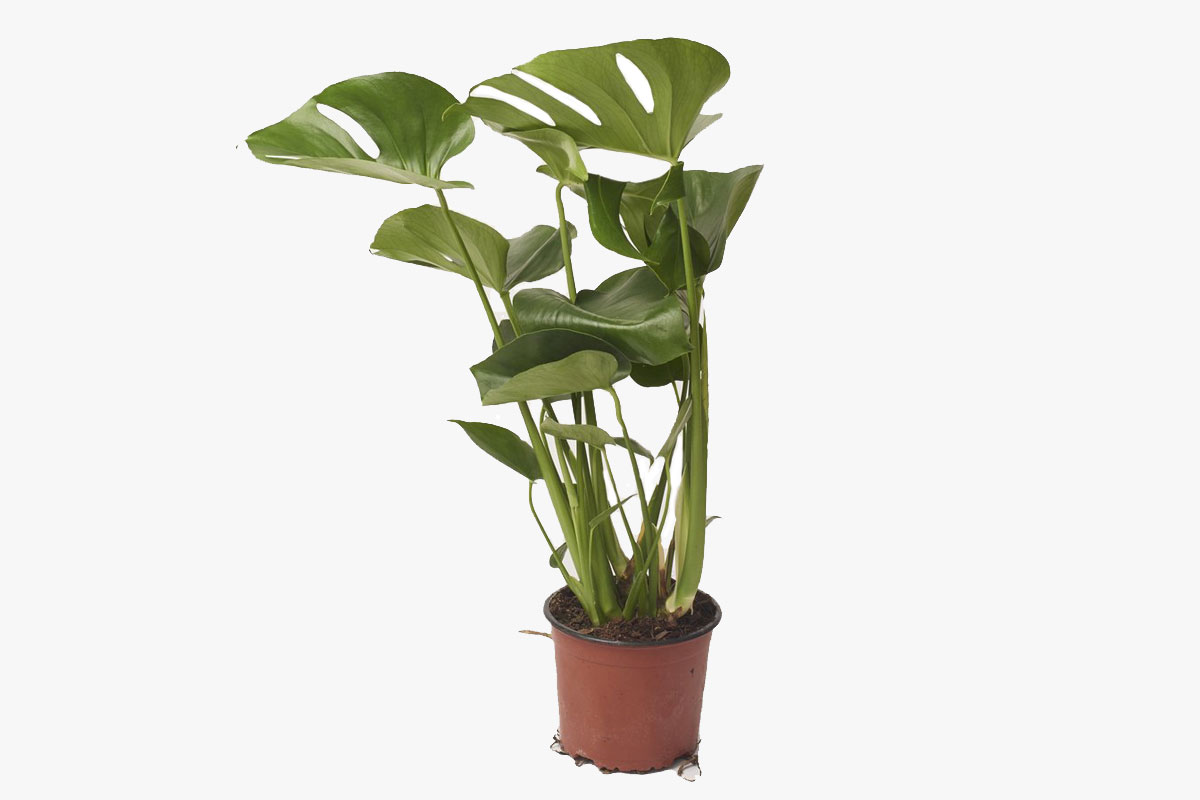 Monstera Deliciosa
Monstera Deliciosa
Best known for its leaves with holes, the Monstera Deliciosa plant is fondly called the Swiss Cheese plant. Originating in Mexico and Panama, it is a durable and easy to care for plant that thrives in warm and humid environments.
The plant grows rapidly when exposed to gentle sunlight, so consider placing one in an area where it can receive medium indirect light. It can tolerate dark areas, though this can result in leggy growth.
Like the other plants on this list, the Monstera Deliciosa does not require regular watering. You can refer to the upper layer of its soil to determine when to water it. If the soil feels dry to the touch, then it is time to water the plant.
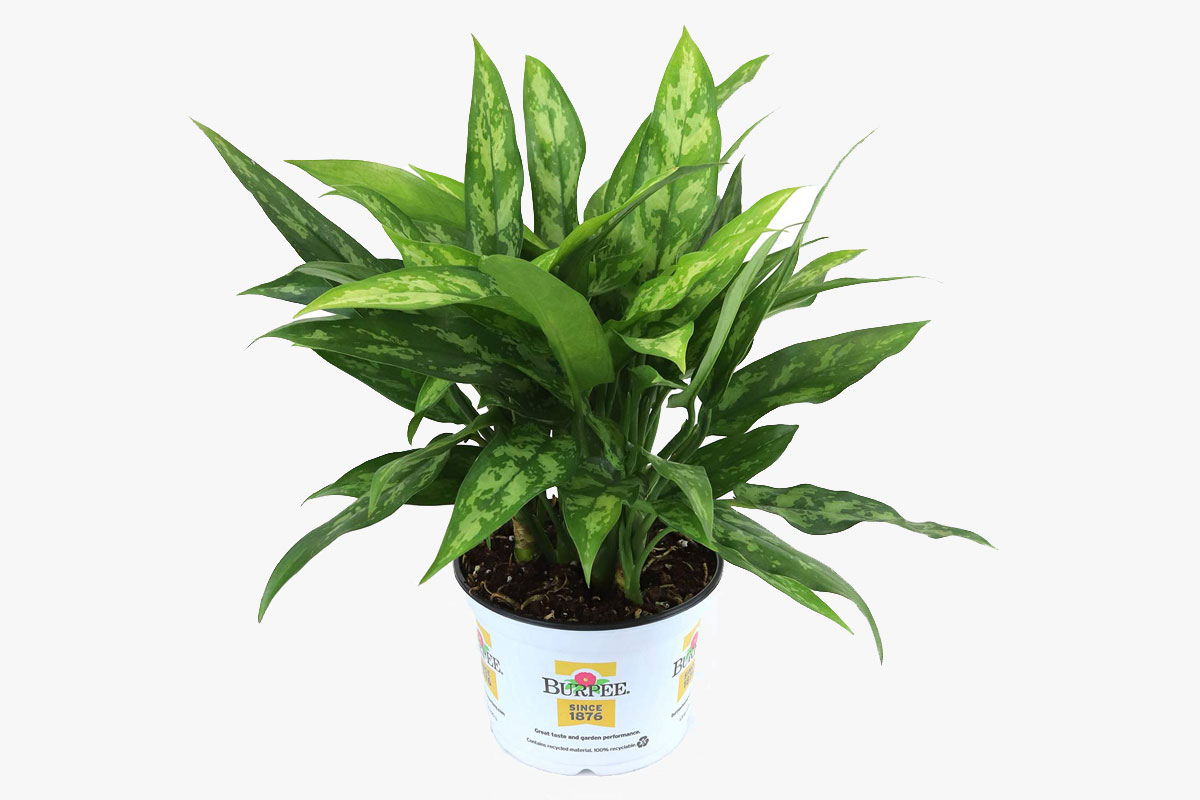 Chinese Evergreen
Chinese Evergreen
Chinese Evergreen is one of the best indoor plants for beginners. It is easy to grow and tolerates every indoor condition. It is beautiful and tough-as-nails, meaning it won’t easily die even if you neglect it.
When it is young, the plant is small enough to fit on tabletops and desks. Don’t worry, as it won’t grow out of bounds quickly because it is a slow-growing plant. Its rich green leaves with silver patterns can enhance the mood in your home or office.
The plant won’t need direct sunlight to thrive. It tolerates low lighting conditions so well that it can do fine in homes and offices with LED lighting.
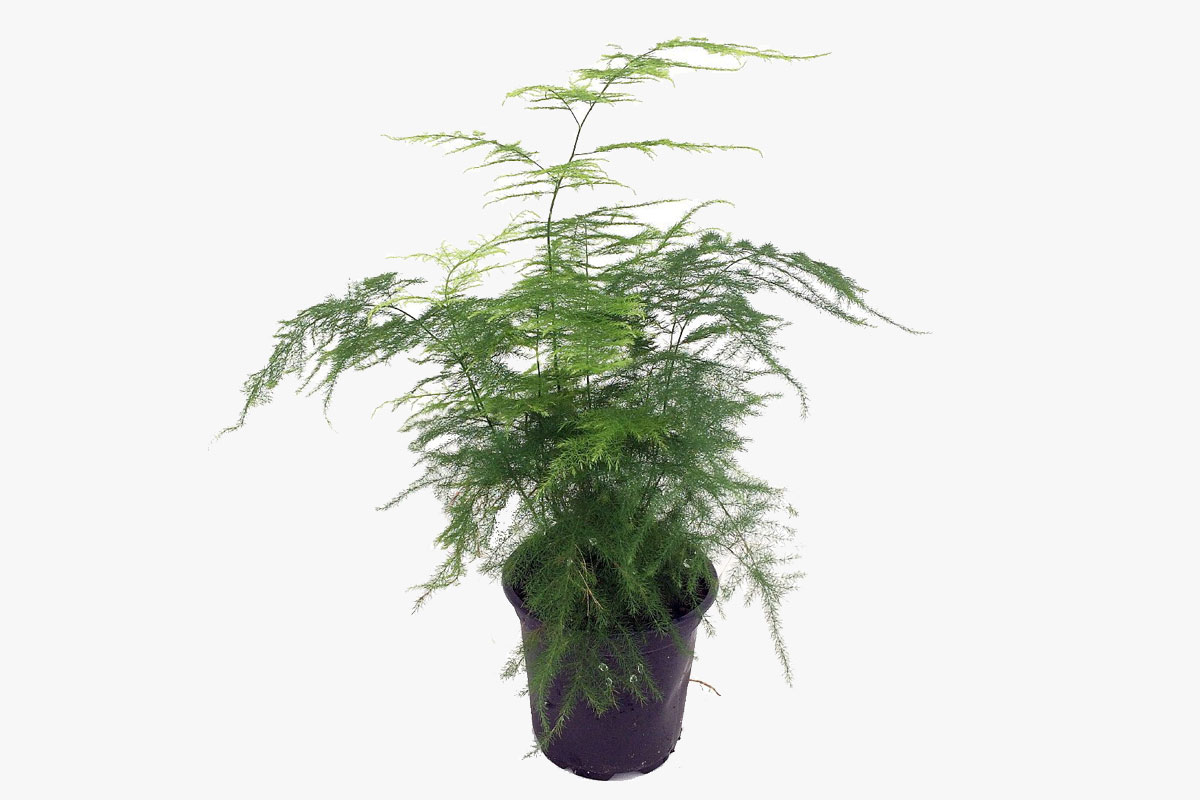 Asparagus Fern
Asparagus Fern
It is likely you have seen an asparagus fern because honestly, this is one of the popular indoor plants in the world. It is commonly hung in a basket to decorate the patio in the summer. In the winter, it is placed indoors to clean the air.
The Asparagus Fern has a soft and fuzzy appearance. It can even grow small flowers and berries. When grown indoors, an Asparagus Fern needs to be misted daily. Provision of a pebble tray is also recommended so that its leaves won’t quickly turn brown and drop.
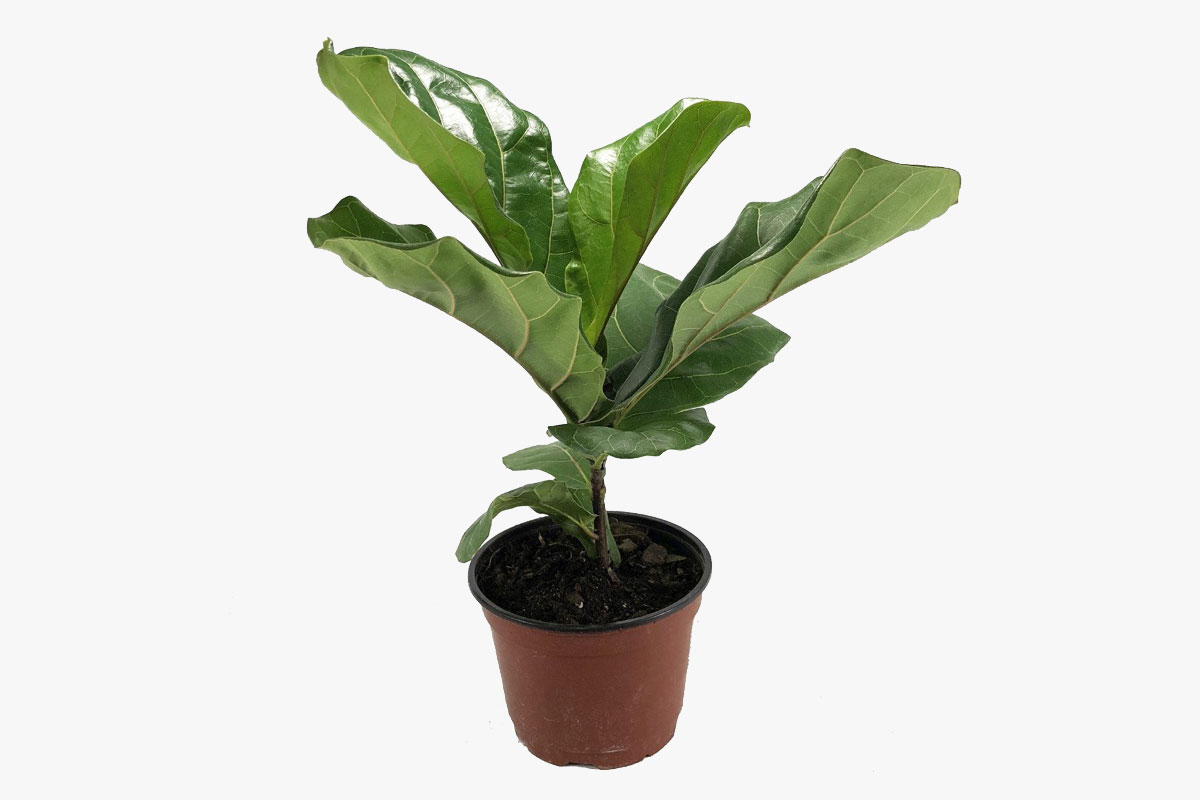 Fiddle Leaf Fig
Fiddle Leaf Fig
The Fiddle Leaf Fig is another of those classic indoor plants that remain hip to this day. This tropical rainforest plant is a favorite subject of many Instagram posts. And why not? It is beautiful with its lush foliage. It also likes bright locations, although you should not put in under direct sunlight. It is easy to care for, too.
Qualities of a Good Indoor Plant
In shopping for a good indoor plant, consider the following factors:
- Watering requirement. This is, hands down, the most time-intensive component of plant care. If you are the type of person who’s too busy to water indoor plants, then it is a must that you get plants that require minimal watering.
- Lighting requirement. The ideal indoor plant accepts lots of lighting conditions, meaning it can fare well in both bright and dark areas.
- Pet-friendly. This is particularly true if you keep dogs and cats in your household.
